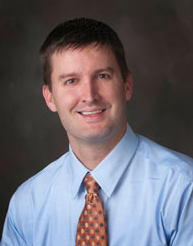
When the Federal Aviation Administration proposes new rules next month on the domestic use of drones, the remote-controlled types of aircraft usually associated with stalking terrorists overseas will take a big step toward entering U.S. skies.
That means a number of industries and agencies will at some point acquire and deploy the small, unmanned aircraft to help them do their jobs: Police, for example, could launch drones to look for fleeing suspects. Farmers, meanwhile, could send them over fields to inform them of irrigation strategies.
And news organizations, says UNL journalism professor Matthew Waite, will begin to inject them into areas ground-bound reporters can’t easily go to capture news footage, such as tornado-ravaged neighborhoods or above crowded squares where protesters may be gathered.
But before the first drone is launched in the name of newsgathering, a host of questions and concerns arise – from how to best use the new technology to deliver news and information efficiently to whether drones are a privacy and safety threat that would lump them, in the public’s mind, in the same camp as celebrity-chasing paparazzi.
That’s why Waite, a professor of practice at UNL’s College of Journalism and Mass Communications, says the time is right to study just how exactly the use of the unmanned aircraft may affect the practice of journalism. Last month, he founded the Drone Journalism Lab at UNL to examine the practical, ethical and legal issues involving drones and news reporting.
In addition to researching the myriad issues that using the pilotless aircraft may create, Waite said students and faculty would eventually use drones in the field.
The lab is a needed resource, he said, because while drones can provide an affordable way for news operations to cover disasters and other types of stories in new and innovative ways, a general outline on the dos and don’ts for such a new newsgathering method hasn’t yet been established.
“We have a responsibility to discuss the use of this new platform, its safety, its legality,” Waite said. “We also need to lay out an ethical framework for its use. What are the right uses of civilian drones? How can journalists use them responsibly? How do you balance the public’s right to know with privacy or security?”
The sooner journalists start having those kinds of conversations, Waite said, the more likely they can have clear answers – both in their daily newsgathering efforts and also in the face of critics who, inevitably, will simply see drone journalism as an invasion of privacy.
“Before there is widespread adoption, we can help managers make a decision – is this a proper use of drones?,” he said. “We can help the journalism industry to determine what are good uses and what are bad uses, so when the time for decisions comes around, it’s not based on ignorance, it’s based on our findings and research."
Waite said he expects to incorporate the lab into future classes – in the classroom by looking at the history of technology’s role in journalism ethics, and also in the field through a summer environmental journalism and data visualization class that will deploy small, inexpensive drones.
“The lab will deal with nearly everything about this new form of journalism,” Waite said. “People have asked, ‘What is the lab’s role when it comes to using drones?’ and my answer is ‘Yes.’”
— Steve Smith, University Communications
More details at: http://dronejournalism.tumblr.com